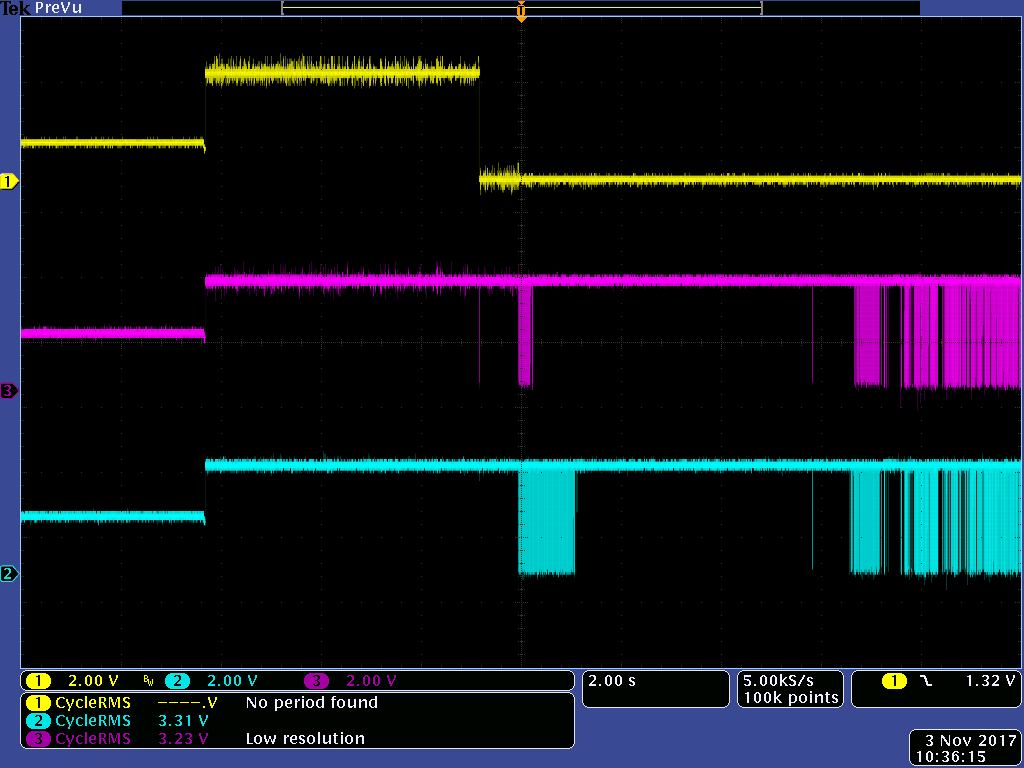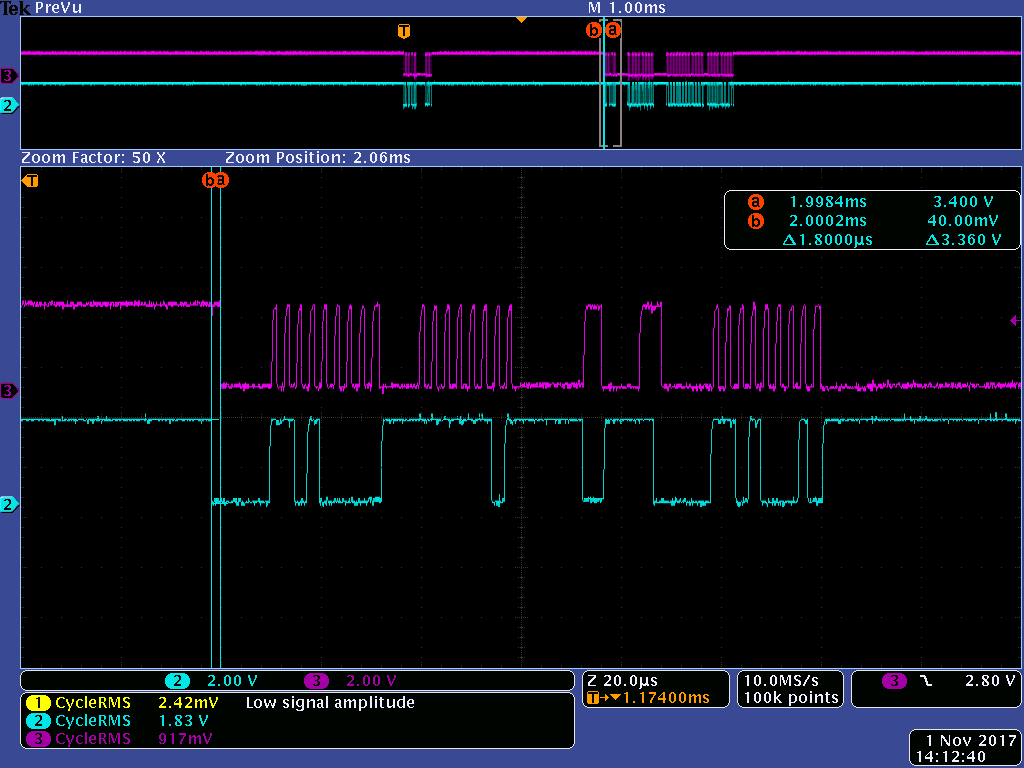Hi:
We used UCD9090 for different voltage rails monitoring showed as below pictures:
Recently we tried to write MFR ID and Revision register through our own PMBUS host, MCU is TI Hercules RM57, the writing procedure is block write, read and save. Sometime it worked, but sometime not worked, it looks not consistently, is this correct writing procedure?
We used TI emulator through Fusion GUI for UCD9090 configuration, it looks no any problem, but after we used our own firmware to write MFR register, UCD9090 keeps reporting Other Comms Fault showed as below:
This fault will assert alert pin and switch off all the rails, so our MCU can't start until we connect TI emulator and run Fusion GUI to switch on rails.
Could you help to let us why this fault is reported as no any communication after power reset? And how can we remove this fault? Does UCD9090 have any command to reset to factory default?
Thanks very much!
Jack




